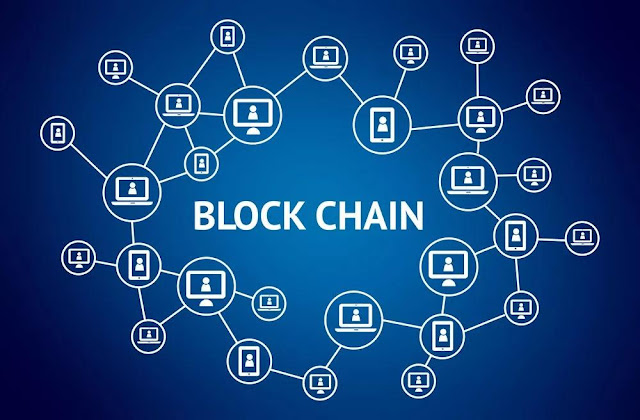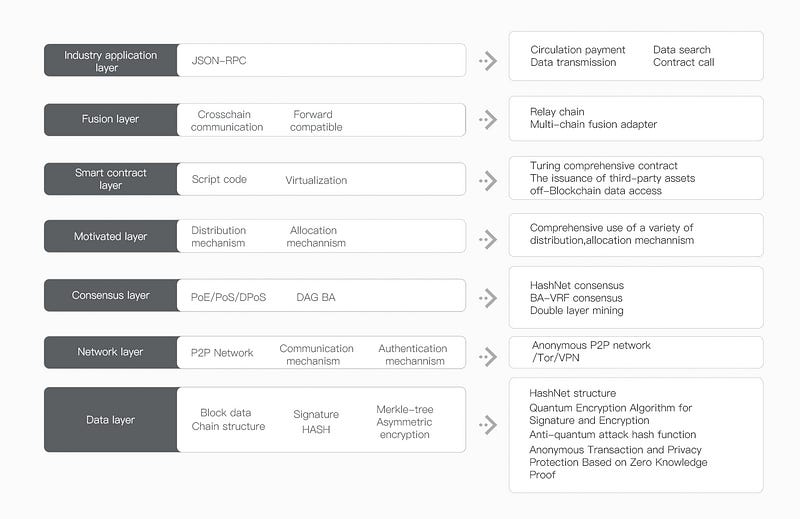InterValue: From Blockchain to Value Interconnect
If not the sudden surge of the bitcoin, we may not know what the blockchain is, in other words, the bitcoin which exists almost ten years and was little known, then one day was mush rushed and let someone gets rich. Thus undoubtedly makes much concentration about the blockchain technology, people began to do research on it and found that the blockchain actually has the potential to change the world of the future. The speculators flocked to the blockchain, thus makes the situation that we familiar with.
Refer to the blockchain, most people just know little about it not the real gift at it. So even many people want to do research on it carefully but can not figure it. Thus we can see many people try to use lots of ways to give an explanation of the concept of a popular blockchain to netizens.
In a narrow sense, a blockchain is a chained data structure in which data blocks are sequentially connected in a time-ordered manner, and cryptography ensured non-falsifiable and unforgeable distributed ledgers.
Broadly speaking, blockchain technology is a completely new distributed infrastructure and computing paradigm that uses blockchain data structures to verify and store data, uses distributed node consensus algorithms to generate and update data, uses cryptography to ensure data transmission and access, uses cryptography to secure data transmissions and access, and uses intelligent contracts composed of automated scripting code to program and manipulate data.
Blockchain technology is not only a fixed form that we familiar with, but it has passed many iterations since its beginning and is still undergoing continuous improvement and development.
01. Blockchain1.0: Cryptocurrency.
In early 2009, the Bitcoin network was officially launched. As a virtual currency system, the total amount of bitcoin is defined by network consensus protocol. No individual or institution can freely modify the supply and transaction records therein. The underlying technology of Bitcoin, the Blockchain, actually an extremely ingenious distributed shared ledger and peer-to-peer value transfer technology that has the potential to affect as much as the invention of double-entry bookkeeping.
02. Blockchain 2.0: Smart contracts.
Around 2014, industry community began to recognize the importance of Blockchain technology, and create a common technology platform to provide developers with BaaS (Blockchain as a service), which greatly improve the transaction speed, reduce resource consumption. Ethereum, the smart contract initiator, took the blockchain into the 2.0 era. The Blockchain 2.0 application incorporates the concept of “smart contracts” (using program algorithms instead of human execution contracts). This allows the blockchain to expand from the initial currency system to the registration and transfer of equity, claims and property rights, the trading and execution of securities and financial contracts, and even financial sectors such as gaming and anti-counterfeiting.
03. Blockchain 3.0: Blockchain technology application.
After 2015, with the rise of Blockchain 3.0 technology based on DAG data structures, such as Byteball and IOTA, Blockchain systems are more efficient, scalable, highly interoperable, and offer a better us experience than before. Applications of Blockchain gradually extend to healthcare,
IP copyright, education, and IOT. Broader applications such as sharing economy, communications, social management, charity, culture, and entertainment.
04. Blockchain 4.0: Blockchain ecosystem.
Recently, Blockchain 4.0 technology based on Hashgraph data structure has gradually attracted the attention of industry community. The consensus algorithm based on Hashgraph can achieve a qualitative growth in transaction throughput and scalability. The Blockchain will become the infrastructure of industry and form a consolidated ecosystem, which also changes people’s lifestyle extensively and profoundly.
05. From Blockchain to value interconnect
The Internet has realized that some information in the human society is transferred and shared on the Internet and creates information interconnect. The blockchain will realize the transfer and sharing of all information including all digital assets and real assets of the human society on the value-based Internet, creating value. interconnected. The realization of value interconnect, namely the realization of various underlying network protocols for value transmission networks, the construction of global value Internet, and the provision of basic networks for various types of value transmission applications, is the great vision of the InterValue project.
Key technologies in platform and features in Blockchain infrastructure are the topmost focus for InterValue. The features include the anonymous P2P protocols, a novel anti-quantum hash algorithm and a novel signature algorithm, a unique double-layer consensus and mining mechanism for transactional anonymous protection, a Turing complete smart contracts, etc. It uses fair distribution mechanism to support third-party asset distribution, cross-chain communications, multi-chain merging functions such as public chain, permissioned chain, consortium chain and mother forms fall into the practical application of the Blockchain 4.0 infrastructure.
In order to create a completely decentralized network value transmission ecosystem and completely open community ecosystem, InterValue has made significant improvements in all aspects of the blockchain infrastructure and has made breakthrough innovations at some levels.
Major technological innovation include:
1. Consensus: we design an efficient and secure double-layer consensus mechanism consisting of HashNet consensus and BA-VRF (Byzantine Agreement based on Verifiable Random Function) consensus, which supports high transaction concurrency, fast confirmation and building eco-systems for different application scenarios.
2. Crossing and merging chains, we adopt chain-relaying technology to solve the problems in crossing chains transaction and transparent operations among multiple chains, which not only can maintain the independence of crossing chains operation, but also reuses various functions of InterValue.
3. Industrial application, we design lots of industrial common interfaces in form of JSON-RPC, satisfying diƈerent scenarios such as circulation payment data transmission, data search, and contract invocation.
4. Smart contracts, we design Moses virtual machine (MVM) which supports declarative non-Turing complete contract as well as advanced Turing complete contract programmed in Moses language. MVM is able to access oƈ-Blockchain data conveniently and securely, and supports the issuance of third-party assets, which can be integrated into applications in terms of public, permissioned (private) or consortium (hybrid) Blockchain.
5. Anti-quantum attack, new anti-quantum algorithms are devised, which replaces existing SHA series algorithm with the Keccak-512 hash algorithm, and replaces ECDSA signature algorithm with an integer lattice-based NTRUsign signature algorithm. These algorithms reduce the threat coming from development of quantum computing and gradual popularization of the quantum computer.
6. Transaction anonymity, based on anonymity characteristics of cryptocurrency such as Monero and ZCash, zero-knowledge proof and ring signature are applied to transaction anonymity and privacy protection, which performs with high cost-effective ratio and excellent security to satisfy privacy requirements in different application scenarios.
7. Underlying P2P network, combining the advantages of Tor-based anonymity and Blockchain-based distributed VPN, we design a novel anonymous P2P overlay network, including anonymous access method and encrypted communication protocol, which greatly enhances anonymity of nodes in the network and ensures that it’s hard to trace node address and to crack communication protocol.
8. Ecological motivation, various token allocation methods are used, which support double-layer mining for incentives.
In the world where InterValue is widely used, people can realize automatic payment, automatic evaluation, automatic preservation, and automatic judgment of legality in any behaviors and activities. People can choose whether or not their lifelong activities and activities are preserved. A virtual person who possesses the individual’s complete awareness and complete autonomous intelligence are born. After the people completely transfer the various assets in real life to the chain, the virtual person representing a personal social entity will be together with the individual assets, and will be kept on the chain forever. Evolution has continued to realize the virtual eternal life of human society, so that each participant can obtain a corresponding value manifestation and lead human beings to the world of value interconnect.





Comments
Post a Comment